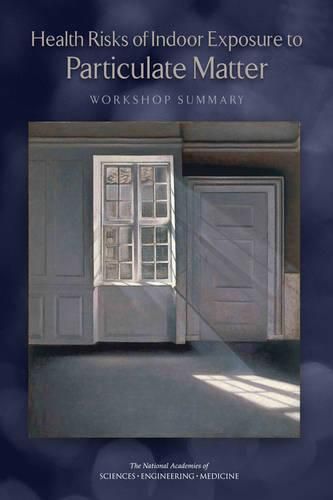Readings Newsletter
Become a Readings Member to make your shopping experience even easier.
Sign in or sign up for free!
You’re not far away from qualifying for FREE standard shipping within Australia
You’ve qualified for FREE standard shipping within Australia
The cart is loading…






The U.S. Environmental Protection Agency (EPA) defines PM as a mixture of extremely small particles and liquid droplets comprising a number of components, including acids (such as nitrates and sulfates), organic chemicals, metals, soil or dust particles, and allergens (such as fragments of pollen and mold spores) . The health effects of outdoor exposure to particulate matter (PM) are the subject of both research attention and regulatory action. Although much less studied to date, indoor exposure to PM is gaining attention as a potential source of adverse health effects. Indoor PM can originate from outdoor particles and also from various indoor sources, including heating, cooking, and smoking. Levels of indoor PM have the potential to exceed outdoor PM levels.
Understanding the major features and subtleties of indoor exposures to particles of outdoor origin can improve our understanding of the exposure?response relationship on which ambient air pollutant standards are based. The EPA’s Indoor Environments Division commissioned the National Academies of Sciences, Engineering, and Medicine to hold a workshop examining the issue of indoor exposure to PM more comprehensively and considering both the health risks and possible intervention strategies. Participants discussed the ailments that are most affected by particulate matter and the attributes of the exposures that are of greatest concern, exposure modifiers, vulnerable populations, exposure assessment, risk management, and gaps in the science. This report summarizes the presentations and discussions from the workshop.
$9.00 standard shipping within Australia
FREE standard shipping within Australia for orders over $100.00
Express & International shipping calculated at checkout
The U.S. Environmental Protection Agency (EPA) defines PM as a mixture of extremely small particles and liquid droplets comprising a number of components, including acids (such as nitrates and sulfates), organic chemicals, metals, soil or dust particles, and allergens (such as fragments of pollen and mold spores) . The health effects of outdoor exposure to particulate matter (PM) are the subject of both research attention and regulatory action. Although much less studied to date, indoor exposure to PM is gaining attention as a potential source of adverse health effects. Indoor PM can originate from outdoor particles and also from various indoor sources, including heating, cooking, and smoking. Levels of indoor PM have the potential to exceed outdoor PM levels.
Understanding the major features and subtleties of indoor exposures to particles of outdoor origin can improve our understanding of the exposure?response relationship on which ambient air pollutant standards are based. The EPA’s Indoor Environments Division commissioned the National Academies of Sciences, Engineering, and Medicine to hold a workshop examining the issue of indoor exposure to PM more comprehensively and considering both the health risks and possible intervention strategies. Participants discussed the ailments that are most affected by particulate matter and the attributes of the exposures that are of greatest concern, exposure modifiers, vulnerable populations, exposure assessment, risk management, and gaps in the science. This report summarizes the presentations and discussions from the workshop.